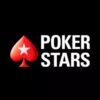As a poker player, I know that starting hands can make or break a tournament. That’s why I’ve compiled these 13 essential tips to help you confidently navigate the early stages of a poker tournament.
From understanding the importance of hand selection to adapting to your opponent’s playing styles, these strategies will give you an edge.
So, let’s dive in and explore how to maximize your chances of success from the very first hand.

1. Understanding Poker Tournaments
In my experience playing poker tournaments, understanding the structure and dynamics of the game is crucial for success. One of the key aspects to grasp is the tournament structure. This includes knowing the blind levels, how they increase, and how they affect your strategy.
It’s essential to adapt your approach accordingly as the blinds escalate, as this can significantly impact your chip stack and overall position in the tournament.
Additionally, analyzing player tendencies is a vital skill to develop. Observing how opponents play in different situations can provide valuable insights into their strategies and enable you to make more informed decisions.
2. Importance of Starting Hand Selection
Regarding poker tournaments, the importance of starting hand selection can’t be overstated. Key factors to consider are optimal hand ranges, strategic position advantage, and risk vs. reward analysis.
Optimal Hand Ranges
I prioritize selecting starting hands within optimal hand ranges to maximize my chances of success in a poker tournament.
Optimal hand rankings play a crucial role in determining the strength of a starting hand and its potential to win the pot. By understanding the concept of optimal hand ranges, I can adjust my hand selection strategy accordingly.
This means being selective and only playing hands that have a high probability of winning in a given situation. It also involves adjusting my range based on the table dynamics, such as my opponents’ playing styles and the tournament’s current stage.
Strategic Position Advantage
Understanding the strategic position advantage is crucial for making informed starting hand selections in a poker tournament.
By recognizing the importance of position, you can exploit your opponent’s position to gain an edge in the game. Your position at the poker table determines the order in which you act, giving you valuable information about your opponents’ actions before making your own decisions.
When starting hand selection, being in a late position allows you to see how other players act before making your move. This advantage grants you the opportunity to play a wider range of hands, as you can gauge the strength of your opponents’ hands and adjust your strategy accordingly.
Conversely, being in an early position requires more caution, as you have less information to work with.
Understanding the strategic position advantage is essential for optimizing your starting hand selection and increasing your chances of success in a poker tournament.
Risk Vs. Reward Analysis
Continuing to analyze the strategic position advantage, assessing the risk versus reward is important when selecting starting hands for a poker tournament. Effective risk management is crucial in maximizing your chances of success in the long run. This involves evaluating the potential rewards and considering the potential risks associated with each hand.
One way to do this is by assessing the hand equity, which measures how likely a hand is to win against other possible starting hands. By understanding the hand equity of different starting hands, you can make more informed decisions and choose hands that offer a favorable risk-reward ratio. This strategic approach to starting hand selection is essential for maintaining a competitive edge in a poker tournament.
Transitioning into the subsequent section about position play strategies, understanding the risk versus reward analysis will provide a solid foundation for implementing effective position play strategies.
3. Position Play Strategies
In my experience, implementing effective position-play strategies is a crucial aspect of successful poker tournament play.
When playing in a late position, I focus on utilizing aggressive strategies to take advantage of my position and put pressure on my opponents. This includes stealing blinds and antes and re-raising with strong hands to isolate opponents.
On the other hand, bluffing in an early position requires caution and selectivity. Since I’ve little information about my opponents’ hands, I only bluff when I’ve a strong read or a good understanding of the table dynamics.
By mastering these strategies for late position and bluffing in early position, I can increase my chances of success in poker tournaments.
Now, let’s delve into the next section and explore the importance of ranking hands for tournament play.
4. Ranking Hands for Tournament Play
When it comes to ranking hands for tournament play, there are a few key points to consider.
First, identifying the best starting hand is crucial to gaining an early advantage.
Second, understanding the importance of position and hand selection allows for more strategic decision-making.
Lastly, adjusting your strategy post-flop is essential for adapting to changing dynamics and maximizing your chances of success.
Best Starting Hand
As a tournament player, my go-to starting hand is the pocket aces. When it comes to best starting hand selection, pocket aces are considered the most substantial hand in Texas Hold’em. Holding a pair of aces gives you a significant advantage over your opponents. However, it’s essential not to fall into the trap of becoming too predictable with your hand selection.
Many players make the mistake of only playing pocket aces aggressively, which observant opponents can easily exploit. Mixing up your play and not overly reliant on one specific hand is crucial. By varying your starting hand selection, you keep your opponents guessing and maintain an element of surprise.
Transitioning into the next section about position and hand selection, understanding the importance of position in relation to your starting hand choices is key to successful tournament play.
Position and Hand Selection
Transitioning from the discussion of the best-starting hand, a crucial aspect of successful tournament play is understanding the significance of position in relation to hand selection. Strategic hand selection can greatly influence your chances of winning, but it’s also important to consider the positional advantages.
Here are four key points to keep in mind:
- Early Position: When you’re one of the first to act, it’s advisable to play tighter and stick to premium hands. This allows you to avoid potential traps and make informed decisions based on the actions of other players.
- Middle Position: You have more information to work with in this position than in the early position. You can widen your range slightly and include hands that have sound potential but still maintain caution.
- Late Position: Being one of the last to act gives you a significant advantage. You can play a broader range of hands, including speculative ones, as you have more information about the actions of others.
- Blind Positions: In the small or big blind, you already have money invested in the pot. This should be considered when selecting hands, and it may be worth defending your blind with a broader range of hands.
Understanding the importance of position and making strategic hand selections based on your position will greatly enhance your tournament performance.
Adjusting Strategy Post-Flop
I rely on a specific set of guidelines to adjust my strategy post-flop and rank hands for tournament play. Adapting post-flop is crucial in poker tournaments as the dynamics of the game change after the first three community cards are dealt. One crucial aspect is adjusting bet sizing based on my hand’s strength and the board’s texture. I use the following table to help me determine the strength of my hand and make appropriate bet sizing decisions:
| Hand Strength | Bet Sizing |
|---|---|
| Nut Flush Draw | Pot |
| Top Pair | Two-thirds |
| Middle Pair | Half pot |
| Overpair | Two-thirds |
| Bottom Pair | Quarter pot |
By adapting my betting strategy post-flop, I can maximize my winnings and minimize my losses. Now let’s explore how to adapt to my opponent’s playing style.
Adapting to my opponent’s playing style is crucial in poker tournaments as it allows me to exploit their weaknesses and make more informed decisions.
5. Adapting to Opponent’s Playing Style
When facing opponents in a poker tournament, adapting to their playing style is crucial for success. Here are four key strategies to employ when adapting to your opponent’s style:
- Adapting to bluffing: Some opponents may bluff frequently, trying to intimidate you into folding. In such cases, it’s important to stay calm and not let their bluffs affect your decision-making. Look for patterns in their betting behavior and adjust accordingly.
- Exploiting tight players: Tight players are cautious and tend only to play strong hands. Please take advantage of this by playing more aggressively against them. Put pressure on them with well-timed bluffs and semi-bluffs, forcing them to fold or make costly mistakes.
- Observing betting patterns: Pay close attention to how your opponents bet. Are they consistently aggressive or passive? Do they tend to bet big when they have a strong hand, or do they make small bets? Understanding their betting patterns can give you valuable insights into their hand strength.
- Adjusting your style: Adapting to your opponent’s playing style doesn’t mean completely changing your style. Instead, make subtle adjustments to exploit their weaknesses while still sticking to your overall strategy.
By adapting to your opponent’s playing style, you can gain a significant advantage at the poker table.
Now, let’s move on to the next section, where we’ll discuss adjusting starting hands.
6. Making Adjustments in Starting Hands
When it comes to making adjustments in starting hands, there are several key points to keep in mind.
First, adapting to your opponent’s playing styles is crucial in determining the type of hands you should be playing.
Additionally, your position at the table should heavily influence your hand selection, as playing from different positions requires different strategies.
Adapting to Opponents
I frequently adjust my starting hands in poker tournaments based on my opponents’ playing styles. Adapting to aggression and exploiting tight players are crucial strategies to maximize my chances of winning. Here are four key ways I adapt my starting hands to my opponents:
- Assessing aggression: If I’m up against aggressive players who frequently raise and re-raise, I tighten up my starting hand range. I focus on playing premium hands that can stand up against their aggression.
- Exploiting tight players: Against tight players who play fewer hands, I loosen up my starting hand range. I use their cautious nature by playing more speculative hands and stealing blinds.
- Adjusting to loose players: When facing loose players who play a wide range of hands, I tighten up my starting hand range and focus on playing strong hands that can hold up against their unpredictable play.
- Reacting to position: Depending on my position at the table, I adjust my starting hand requirements. In an early position, I play tighter and focus on stronger hands, while in late position, I can loosen up and play a wider range of hands.
Position and Hand Selection
Continuing to adapt to opponents, I make adjustments in my starting hands based on my position at the table and the specific hand selection required.
Positional advantage is a crucial factor in strategic hand selection. I tend to play more cautiously when sitting in an early position, as I’ve less information about my opponents’ actions. Consequently, I prefer to play premium hands like pocket aces or kings, which are more likely to win.
However, when in a later position, such as the button or cutoff, I have the advantage of acting last, allowing me to gather more information before making a decision. This enables me to play a broader range of hands, including weaker ones with potential for improvement.
By adjusting my starting hands based on position, I can maximize my chances of success in the tournament.
Now, let’s delve into the next section, discussing the importance of balancing risk and reward.
Balancing Risk and Reward
To succeed in poker tournaments, it’s crucial to strike a balance between risk and reward when adjusting starting hands. Effective risk management and accurate hand evaluation are essential skills to develop to maximize your chances of winning. Here are four key considerations to keep in mind:
- Hand strength: Evaluate the strength of your starting hand based on factors like position, chip stack, and table dynamics. Adjust your risk level accordingly.
- Opponent tendencies: Take note of your opponents’ playing styles and adjust your starting hand selection accordingly. Play more aggressively against tight players and more cautiously against loose players.
- Stack size: Consider the size of your chip stack when deciding which starting hands to play. Take calculated risks when you have a healthy stack, and be more conservative when your stack is dwindling.
- Tournament stage: Adapt your starting hand selection based on the stage of the tournament. Play tighter in the early stages and loosen up as the blinds increase.
By carefully balancing risk and reward through proper hand evaluation, you can increase your chances of success in poker tournaments.
Now, let’s explore the next section about utilizing starting hand selection.
7. Utilizing Starting Hand Selection
One of the critical factors in poker tournament success is the utilization of proper starting hand selection. Effective hand selection strategies are essential for effective risk management in poker tournaments. Choosing the right starting hands maximizes your chances of winning while minimizing risk exposure.
It’s essential to consider various factors when selecting your starting hands, such as your position at the table, the size of your chip stack, and the playing styles of your opponents. By carefully analyzing these factors and making informed decisions, you can increase your chances of success in poker tournaments.
8. Analyzing Table Dynamics
I analyze the table dynamics to gain insights into my opponents’ playing styles and adapt my starting hand selection accordingly. Here are four key factors I consider when analyzing the table dynamics:
- Analyzing player tendencies: By observing how my opponents play their hands, I can identify their tendencies, such as whether they’re aggressive or conservative players. This information helps me make more informed decisions about which hands to play and how to approach each situation.
- Adjusting play based on stack sizes: The size of my opponents’ chip stacks can greatly influence their decision-making. A player with a short stack may be more inclined to go all-in, while a player with a large stack might play more cautiously. Understanding this dynamic allows me to exploit their stack sizes to my advantage.
- Recognizing positional advantages: My position relative to my opponents can significantly impact my starting hand selection. Being in a later position gives me more information about my opponents’ actions, allowing me to make better decisions. Conversely, being in an early position requires more caution as I’ve less data to work with.
- Identifying table dynamics and player interactions: Poker is a game of constant interaction between players. By paying attention to how players interact with each other, I can gain valuable insights into their strategies and adjust my play accordingly.
Analyzing table dynamics is crucial in maximizing my chances of success in poker tournaments. By understanding player tendencies, adjusting my play based on stack sizes, recognizing positional advantages, and observing table dynamics, I can make more informed decisions and exploit weaknesses in my opponents’ ranges.
9. Exploiting Weaknesses in Opponent’s Ranges
By analyzing the table dynamics, I can exploit weaknesses in my opponents’ ranges and gain an advantage in poker tournaments. Exploiting ranges is a crucial skill that requires strong hand reading abilities. Understanding what hands your opponents are likely to play in different positions allows you to make informed decisions and take advantage of their weaknesses.
To illustrate this concept, let’s consider a hypothetical scenario at a poker table:
| Player Position | Opponent’s Range | My Play |
|---|---|---|
| Early Position | Tight Range | Raise with premium hands |
| Middle Position | Wide Range | Call with speculative hands |
| Late Position | Loose Range | 3-bet with strong hands |
In this table, we can see that I adjust my play based on the opponent’s range in each position. By recognizing their weaknesses, I can exploit them by playing strategically and maximizing my chances of winning.
Developing strong hand reading skills and exploiting weaknesses in opponent’s ranges is critical to becoming a successful poker player. It lets you make more accurate decisions and capitalize on your opponent’s mistakes.
10. Avoiding Common Starting Hand Mistakes
To avoid common starting hand mistakes in poker tournaments, I must carefully assess the strength of my hand and make strategic decisions based on the table dynamics and the opponent’s ranges. Here are some common misconceptions to avoid and tips for adjusting to table dynamics:
- Don’t be too loose: Many players play too many hands, hoping for lucky flops. It’s important to be selective and only play strong hands.
- Don’t be too tight: On the other hand, being too tight can make you predictable. Mix up your play and take advantage of opportunities when they arise.
- Watch the table dynamics: Pay attention to how your opponents are playing. Are they aggressive or passive? Adjust your strategy accordingly.
- Be aware of position: Your position at the table can greatly influence your starting hand selection. Play tighter in early position and looser in late position.
11. Evaluating Risk Vs. Reward
Evaluating the risk versus reward is crucial when deciding about starting hands in poker tournaments. It is essential to carefully consider the potential gains and losses before committing to a hand. One way to assess the risk versus reward is by managing your bankroll effectively. This involves setting a budget for your tournament play and sticking to it, avoiding unnecessary risks that could deplete your funds. To further illustrate this point, consider the following table:
| Starting Hand | Risk | Reward |
|---|---|---|
| Pocket Aces | Low | High |
| 7-2 Offsuit | High | Low |
| King-Jack | Medium | Medium |
12. Capitalizing on Early Position
When considering starting hands in poker tournaments, one effective strategy is capitalizing on early positions. Being one of the first players to act gives you a positional advantage, allowing you to make more informed decisions based on the actions of others. Here are four key ways to maximize your profits and exploit this advantage:
- Play tight: In an early position, being selective with your starting hands is crucial. Focus on premium hands like pocket pairs, suited connectors, and high-value suited cards.
- Open with a raise: Raising pre-flop puts pressure on your opponents and narrows the field. This increases your chances of winning the pot and maximizes your potential profits.
- Avoid speculative hands: Avoid hands with low potentials, such as weak-suited cards or small connectors. These hands are more likely to lose value in early position.
- Observe opponents: Use your position to gather information on your opponents’ playing styles. This knowledge will help you make better decisions throughout the hand.
13. Expanding Your Starting Hand Range
Expanding my starting hand range allows me to take advantage of my early position in poker tournaments. By incorporating a more comprehensive range of hands into my strategy, I increase my chances of catching strong starting hands and gaining an early advantage over my opponents.
However, expanding my range doesn’t mean playing every hand. It’s crucial to employ effective hand-selection strategies still. I focus on selecting hands that have the potential to dominate weaker hands and connect well with the community cards.
This means considering factors such as position, stack sizes, and the playing style of my opponents. By carefully expanding my range and utilizing innovative hand selection strategies, I can maximize my opportunities for success in poker tournaments.
Conclusion
In conclusion, mastering the art of starting hand selection is crucial for success in poker tournaments.
Players can maximize their chances of winning by understanding the importance of position play, adapting to opponents, and avoiding common mistakes.
Evaluating risk versus reward and capitalizing on early position are vital strategies to employ.
Expanding your starting hand range can keep opponents guessing and give you an edge at the table.
With these essential tips in mind, you can confidently navigate poker tournaments and increase your chances of coming out on top.


















